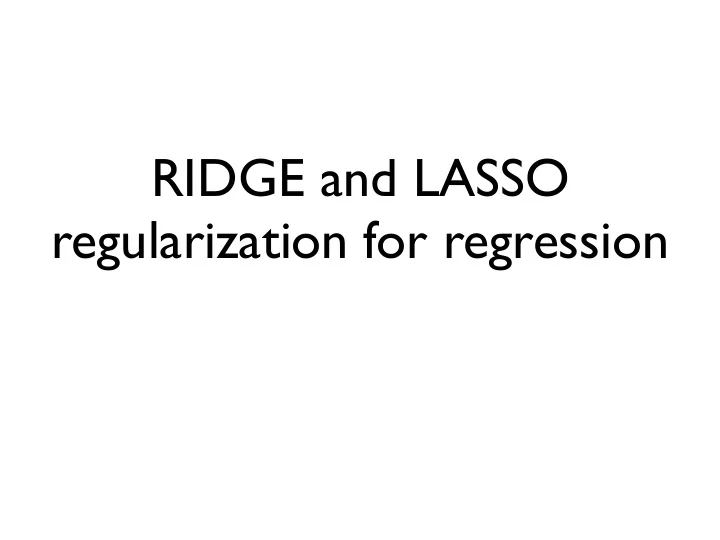

RIDGE and LASSO regularization for regression
Feature selection - Some algorithms perform naturally feature selection - for example Decision Trees, Boosting - Other algorithms have difficulty with correlated features - for example Naive Bayes, Regression - Some algorithms have difficulty with too many features
Feature selection - Task(label) Independent, Model independent - Dimensionality reduction, clustering - PCA - Filter Methods: Task dependent, Model independent - compute correlation among pairs of features - compute correlation of feature with labels - Wrapper methods: Task dependent, Model dependent - try subsets of features with a given ML algorithm, pick a “best” subset
Forward Feature Selection - Task dependent, Model dependent - Select one feature at a time, dynamically - depending on how previous features do
Problems with regression - Free coefficients (unconstrained) can result in problems - features canceling each other - features overwhelming each other - large complexity with no generalization benefit - Solution : constrain the coefficients
Regularization for regression - Regression: same as before, a linear predictor � � - Regularized regression means add a “complexity” penalty in the objective - the objective contains the traditional least square (to be minimized) - but also R(w) a notion of complexity (to be minimized) � - λ tradeoffs the complexity for the objective
Regularization for regression - RIDGE penalty : L2 norm - causes all w coefficients to be small � � - LASSO penalty: L1 norm - causes some coefficients to be 0 (feature selection) � � - “elastic-net” : mixture of L1 and L2 norms
Digits dataset - can be written as constrained optimization - a direct correspondence between λ and t - solved by taking derivatives with Lagrangian Multipliers
RIDGE vs LASSO - the solution w will be in the feasible region (solid blue)
RIDGE vs LASSO - RIDGE penalty for linear regression is essentially a regression problem with bigger matrices - Z = matrix data; n=number of data points, p=number of dimensions/features � � � � � � � � � � - like regression, admits analytical solution
RIDGE vs LASSO - LASSO does not have an analytical solution - RIDGE regularized regression can be solved with Gradient Descent : simply add a term to the gradient - same for RIDGE-Logistic regression - LASSO can be solved via quadratic programming - or via approximation schemas like “forward stagewise”
Logistic Regression with RIDGE � - like before, Logistic Regression optimizes max log likelihood of data - but now we add the L2 RIDGE penalty � � � � - to use Gradient Descent we differentiate for each component j - gradient same as the one for logistic regression, except adding the differential of RIDGE penalty � �
Logistic Regression with RIDGE - The differential gives the Gradient Descend rule
Recommend
More recommend